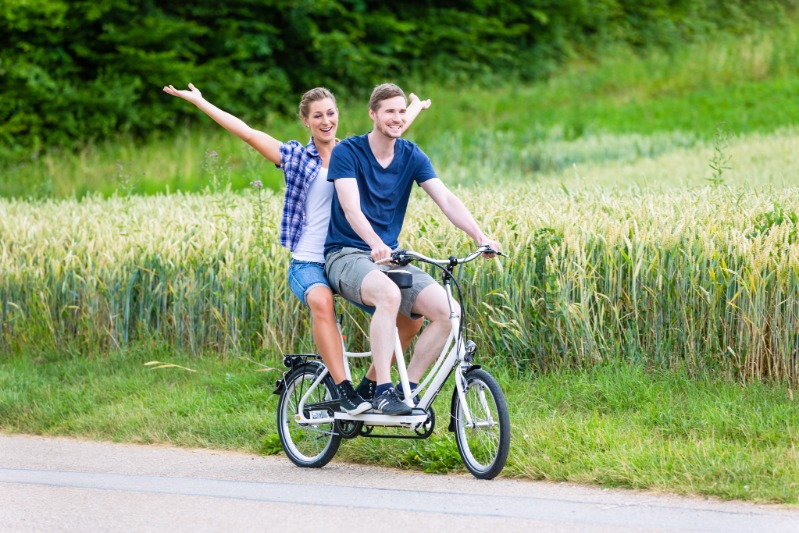Riding on a Bicycle Built for Two
Have you ever wondered what it was really like to have a bicycle built for two? I mean, they say that true love never has to be shared by more than one person, but what about when it comes to bikes? A Roseville Bicycle Shop will show you that the idea of doubling up on your pedaling seems pretty good at first. There are two sets of wheels instead of one, so it's easier and faster than walking. And the double-seat is way more comfortable than those bucket seats on regular old single-person bikes.

But when you're out in the world together, pedaling side-by-side with your sweetheart, biking becomes complicated and sometimes even dangerous. First off, the pedals on the double-seat bike spin in the same direction, so you have to take turns with your partner; whoever is sitting on the left side has to pedal while the one on the right is coasting. This means that both of you are always going to be traveling at different speeds. What if your bikes start to pull apart from one another? Then one of you has to slow down or fall off. If that happens, who will pedal then? The solution to this problem would be to buy two identical single-seaters and ride them both at once, so that they are each going full speed all by themselves. But this solution doesn't work well with bikes that are meant for two people (like road bikes). The dual wheels on a U-shaped bicycle are designed to spin in the same direction, so you don't want to use them by themselves. You could have one person in the seat and pedal, or have both people riding and letting one person pedal, but who sits where? And if you're pedaling both of the bike's wheels at the same time, it's going to be uncomfortable.
So, the designer of the double-seat bicycle must have had to get creative to find a way around these problems. He or she must have thought ahead and designed it with a kickstand and a hand brake so that when you need to make a stop, one of you can let go of the pedals to put your foot on the ground and hold on to the other person's handlebars. This means that when it comes time to stop, you don't have to steer in order to slow down from one speed to another. When both people are braking, their gears are engaged simultaneously.
But sometimes the person that needs to stop is the one who's in the seat! When you're both pedaling, it's hard for that person on the left side to lean over enough to place their hand on the handlebar. And you don't want your partner to have to put a foot down and let go of the pedals just so they can stop. What if they need to stop but can't do it without stopping themselves? What if there's a pothole ahead and they need all of their hands to hold on tight?

A solution to this would be an automatic brake. Now, no one needs to pull a lever or push down a pedal for this brake thingy to work because it would work by itself. The bike would automatically slow down when you applied some pressure to one of the pedals. This way, even if your hands are busy holding on to the person you're riding with, you can still stop by simply pushing down on your pedal. But wait a second! What if both of you need to stop? Two or more riders are forced to apply pressure together in order for the brakes to work, because otherwise their feet can't keep up with each other's. If you want to increase your braking power, the solution is simple: put two single-seater bikes side-by-side and pedal both at once. But this solution doesn't make it any easier to slow down; you still have one person on each bike that needs to pedal.
